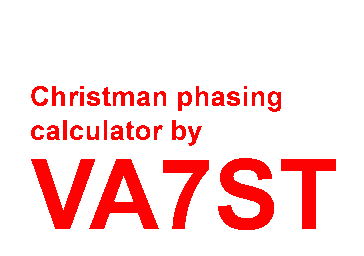
Note: This diagram does not show a second relay used to create a broadside pattern (simply shorts across the A and B terminals, so each antenna is fed by the same length of feedline). If you want to keep each antenna’s radial system isolated from the other antenna, use a DPDT relay instead — which will let you switch both the shield and the center conductors of each feedline.
Here’s how to cut them to the correct length:
Connect the antenna analyzer to one end of a cable,other end left open.
Hold the coax centre and shield against the analyzer’s connector,
so there is no extra length presented by a PL259 —
Even a 1/4-inch of extra length makes a difference.
Trim the coax until the analyzer indicates minimum Z impedance —
this is where the line is precisely 1/4 wavelength (90 degrees) long, as follows:
- For 7.050 mhz, the 84-degree feedline is 90 deg. at 7.554 mhz.
- For 7.050 mhz, the 71-degree phasing line is 90 deg. at 8.937 mhz.

